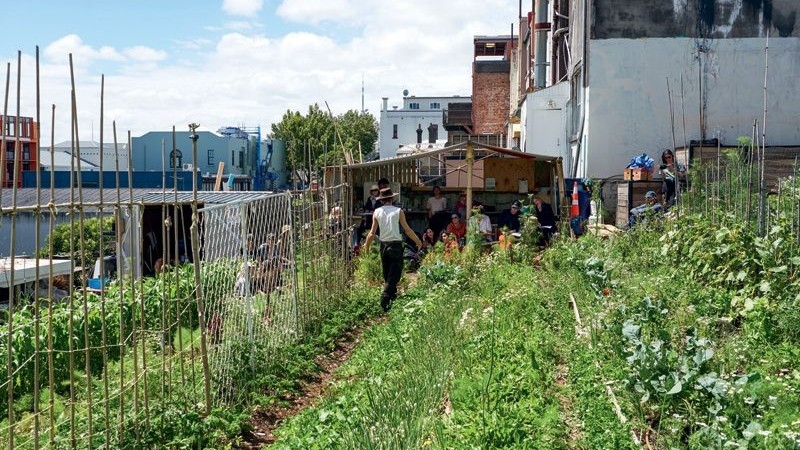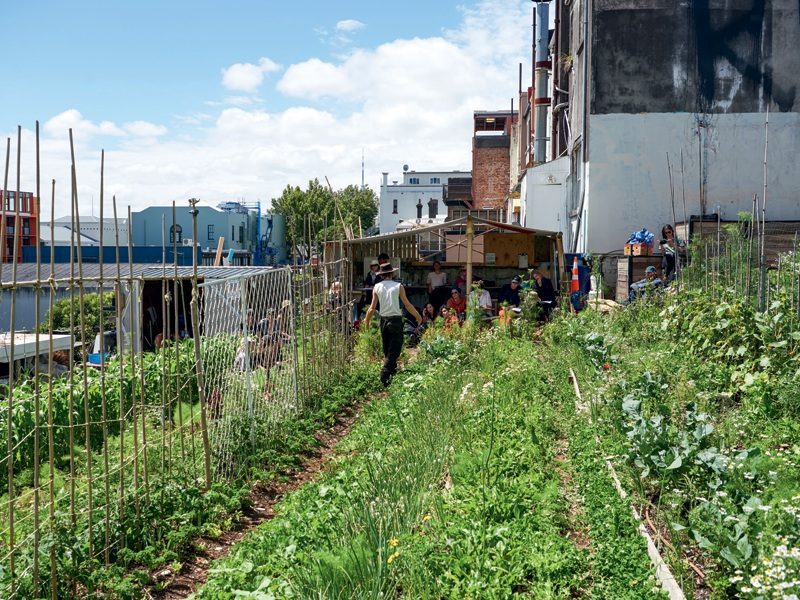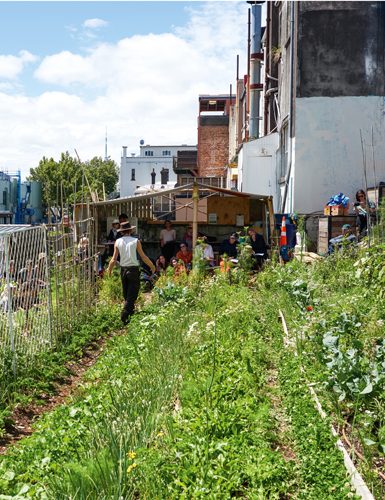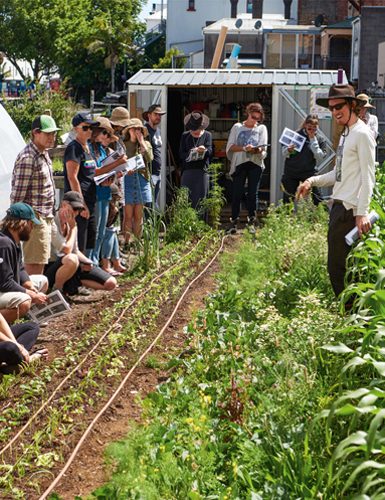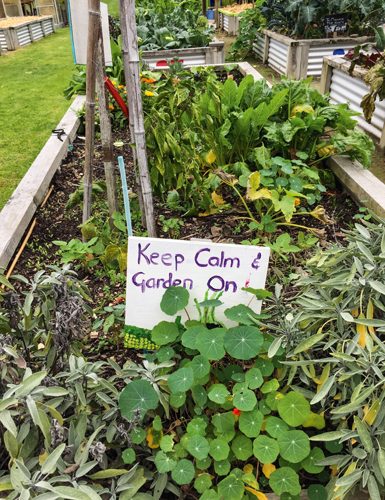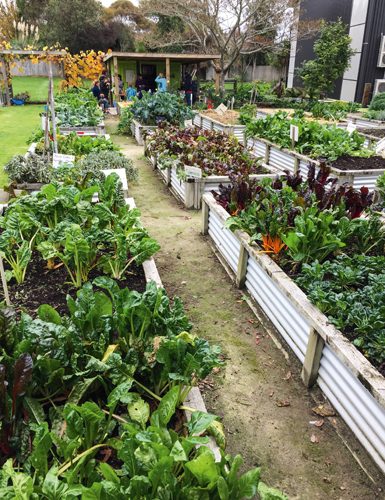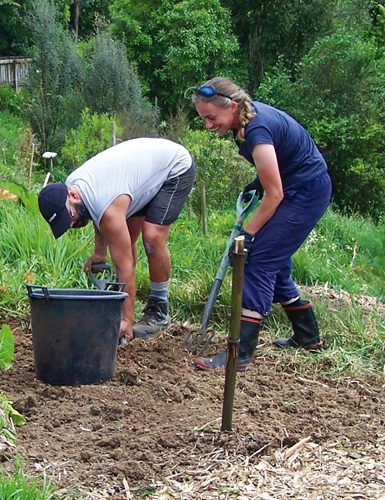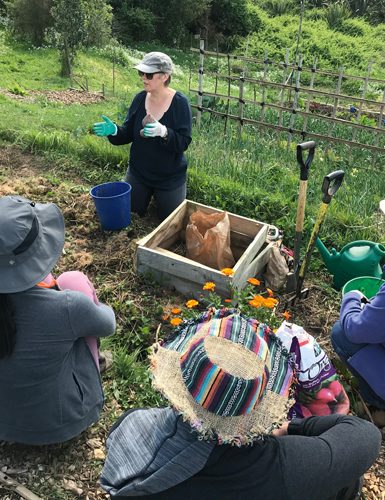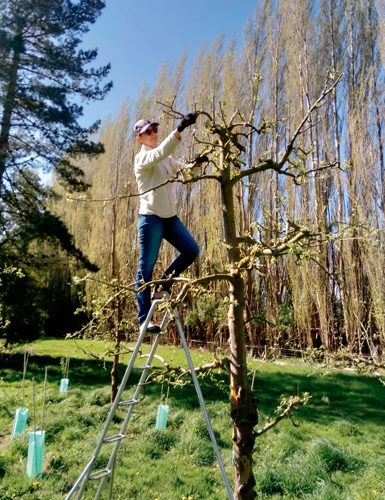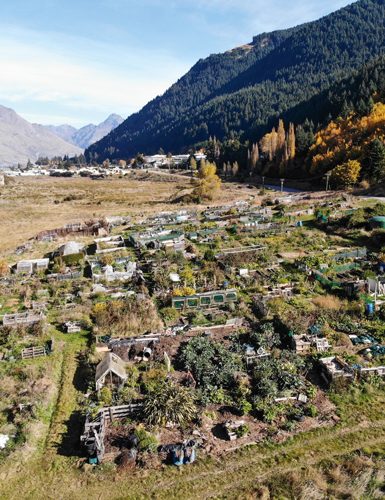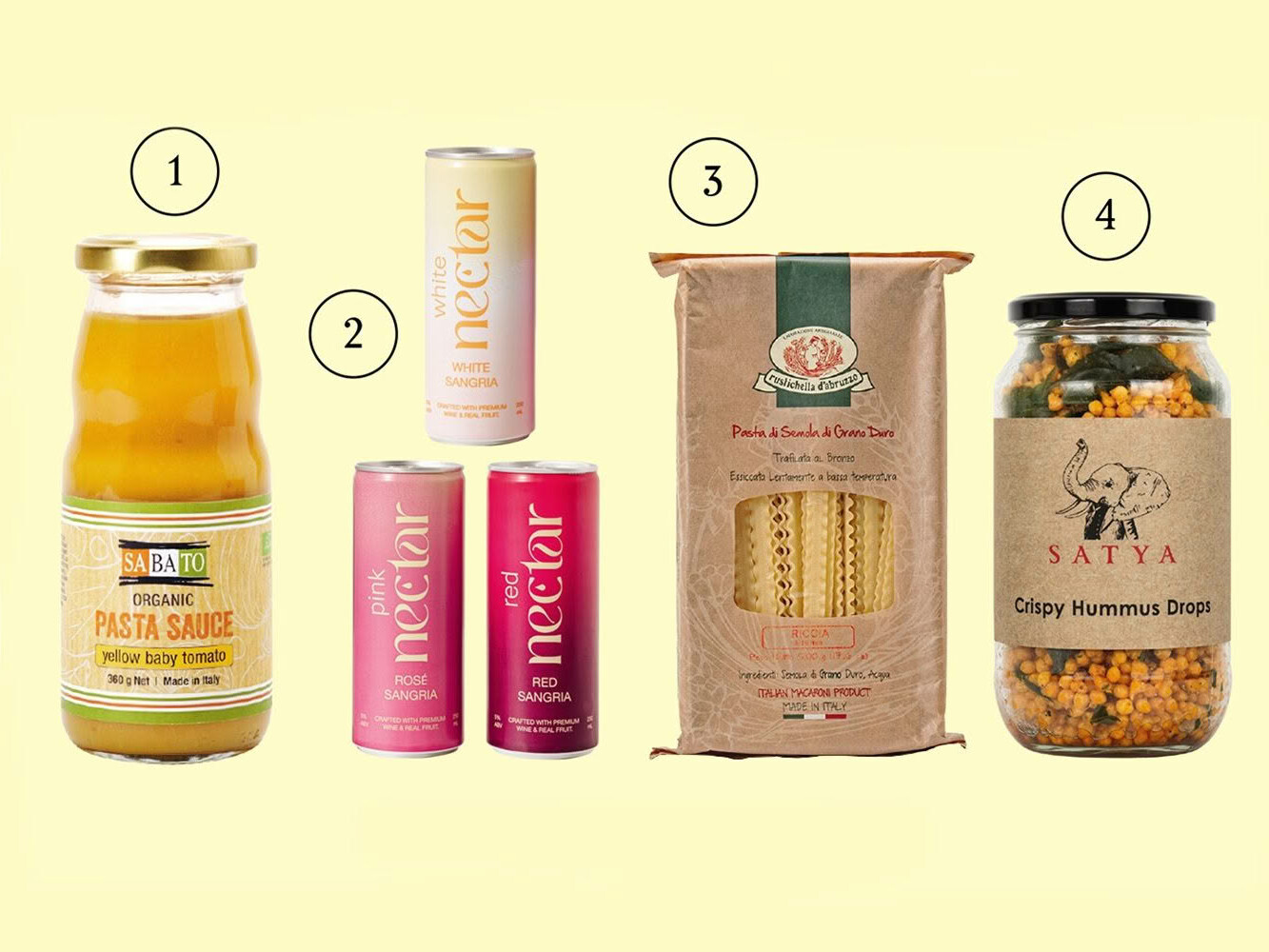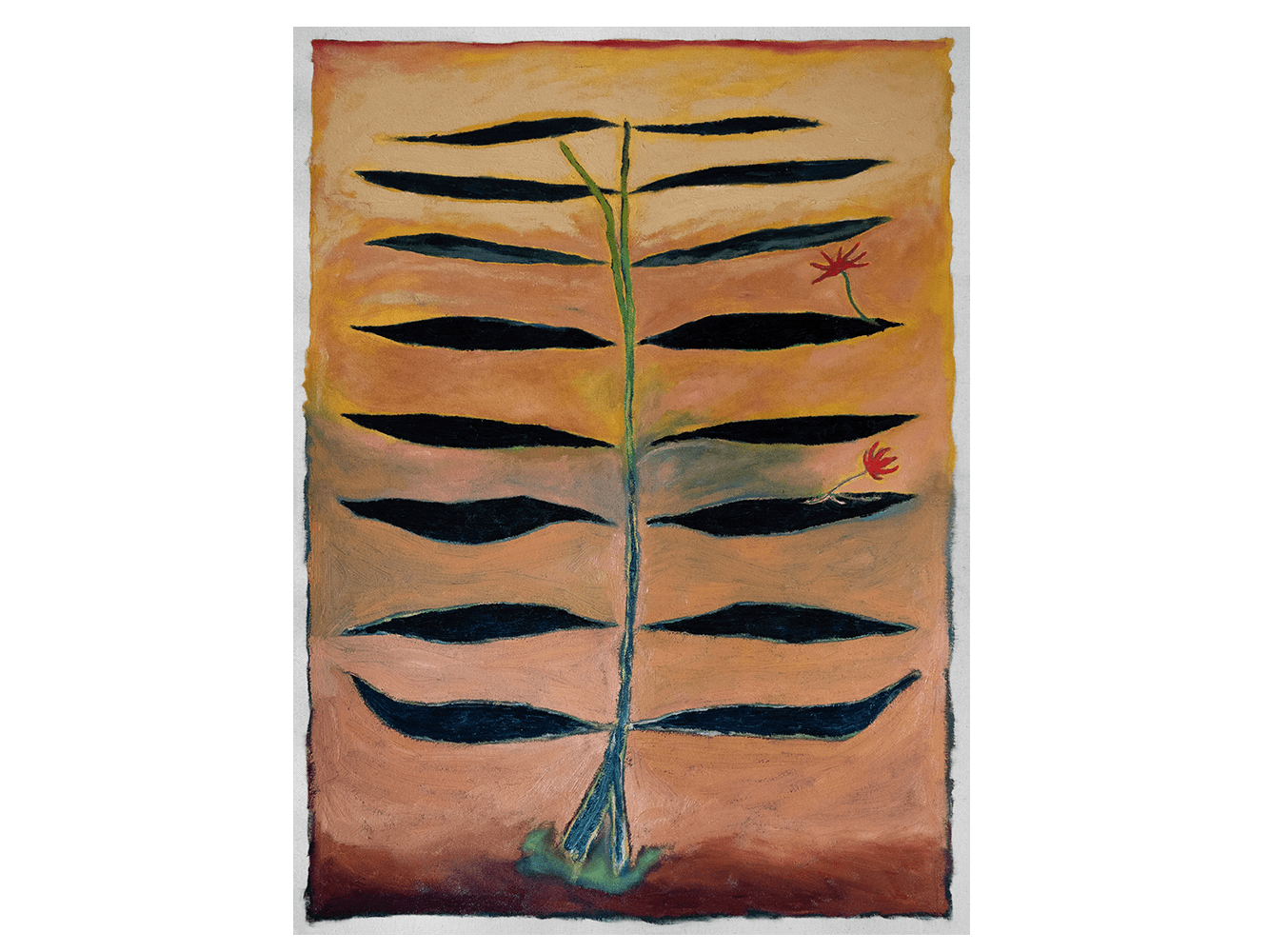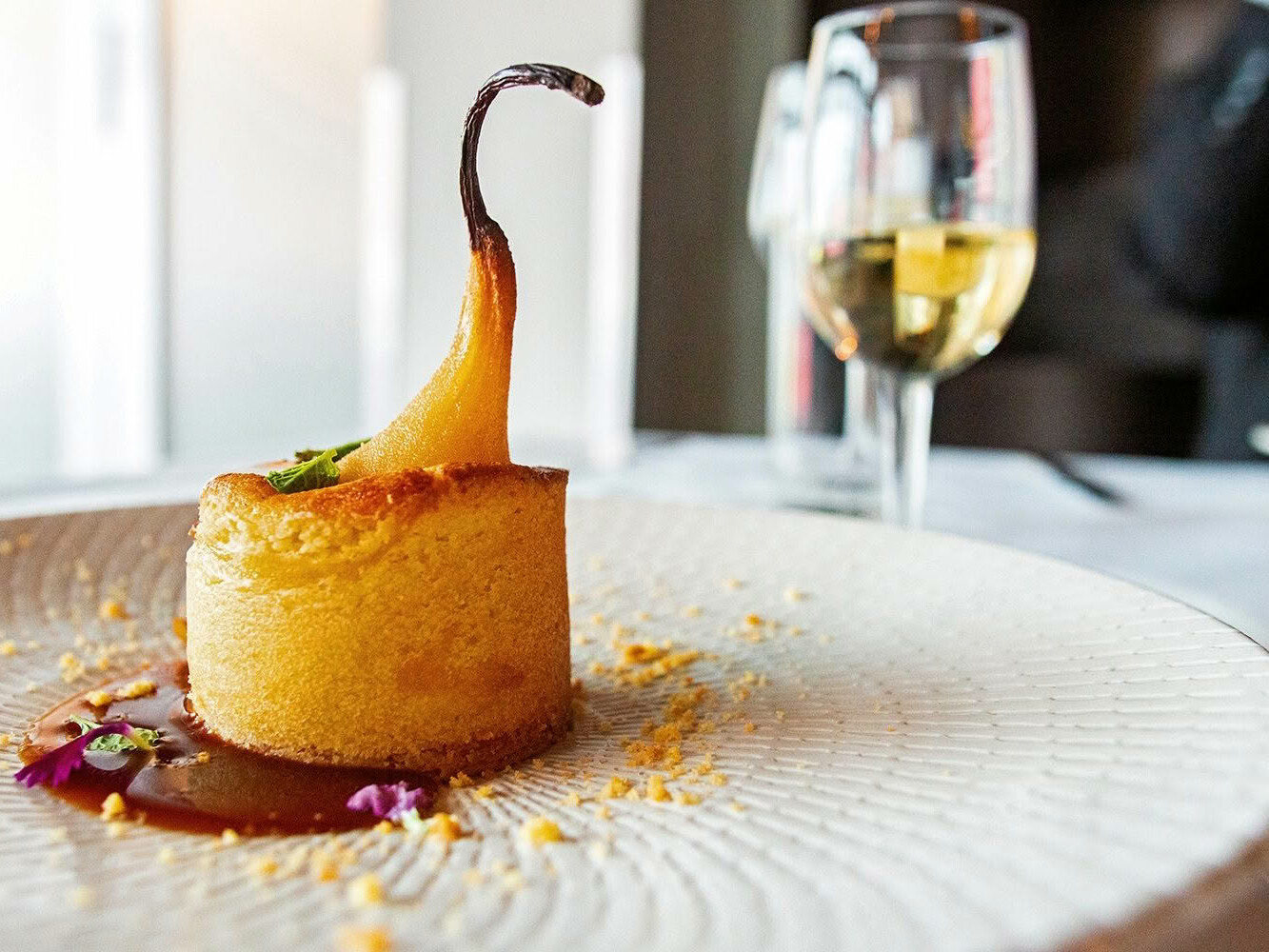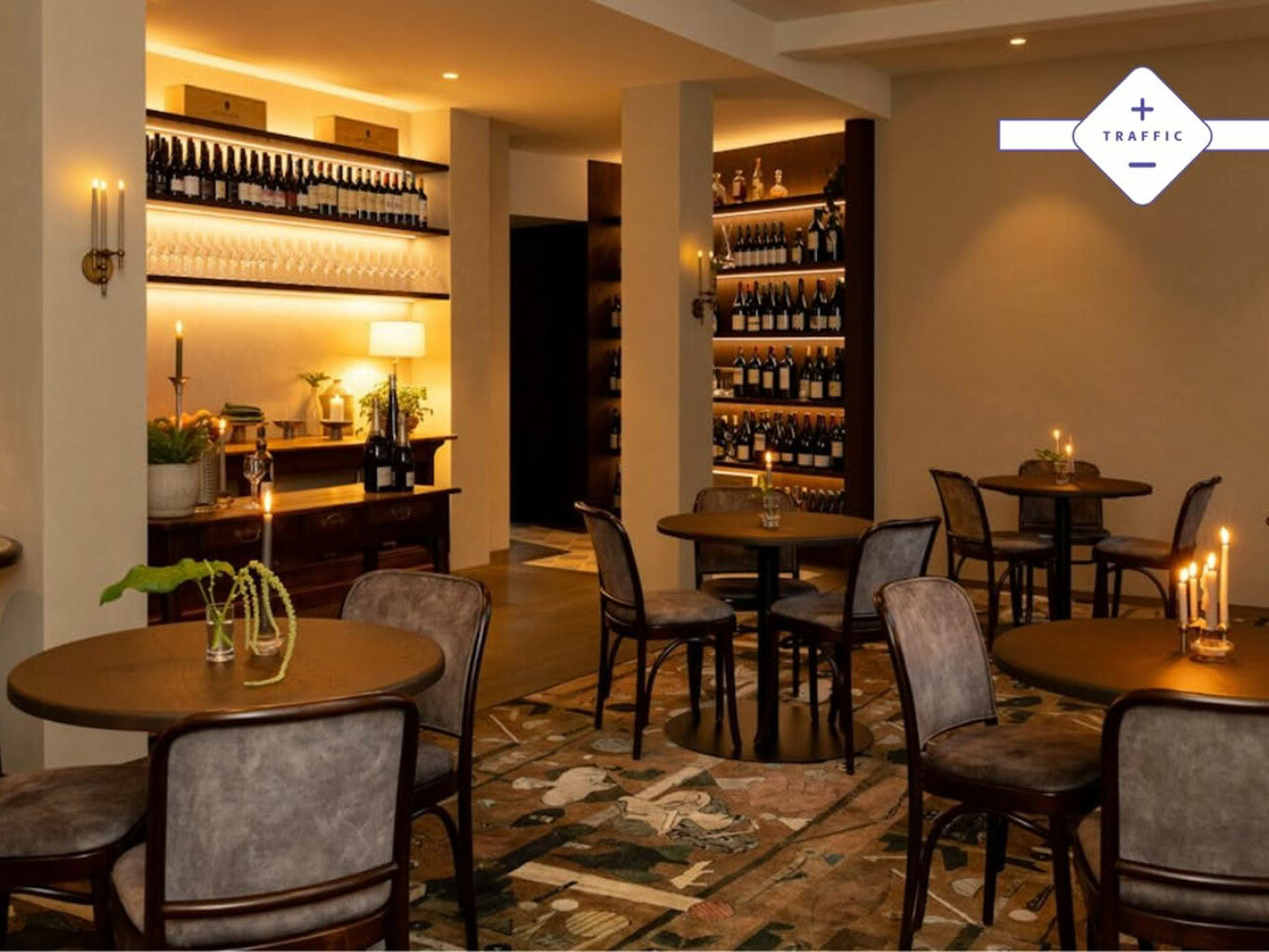Getting sociable with the soil is good for body and soul. Claire McCall rounds up seven community gardens throughout New Zealand.
Northland
‘Growing people, growing produce’ is the vision of The Maunu Garden Project, a Whangārei-based independent trust where the produce grown – think kamokamo, Māori potatoes and kūmara – is donated through the Salvation Army, Open Arms (an organisation that provides meals for the homeless) and the Māori Women’s Welfare League. Volunteer coordinator Rina Hudson said that when she harvested her first field of kūmara this year it was hard yakka – “like an archaeological dig” – but worth it because there is huge need in the region. “Gifting is the base of the garden,” she says. But Rina also likes to have fun. This year, she’s turning the air purple, with vegetables such as purple capsicums, purple beans and purple-sprouting broccoli. The trust was also invited into the kaumātua flats where they are helping the residents start their own small patch. “Even if it’s just silverbeet, the planting and interaction sparks conversations,” says Rina. “It reminds us that we once were gardeners.” facebook.com/maunugarden/
Auckland
Not a community garden per se, OMG (Organic Market Garden) is a regenerative urban farm that operates a community-supported agriculture (CSA) model on City Rail Link land right in the middle of New Zealand’s biggest city. “Our volunteer opportunities allow people to get their hands in the soil,” says head gardener Levi Brinsdon-Hall. Working bees on Tuesdays and Fridays are well attended but for the gardener/foodie who takes humankind’s impact on the eco-system seriously, there are also courses, such as one in July 2021 on regenerative gardening. If full immersion in soil science and biology-first practices over five days is too much to consider, tune in online to an ‘Instagram takeover’ where farmers in the field share their experiences and knowledge. Or sign up on Instagram for a seasonal seed package or to pick up a weekly vege box (including salad greens) – but beware there’s a waiting list. OMG is integral to the For the Love of Bees movement: see fortheloveofbees.co.nz and get caught up in the buzz.
Tauranga
Three minutes a day is all it takes to develop a habit that will expand your larder and your mind, says Ena Velseboer, manager of community gardens for Good Neighbour Aotearoa Trust. The trust has two gardens in Tauranga which, at times, feed into a training kitchen where participants learn the basics of cooking as a pathway to employment. At Welcome Bay, there are 28 garden beds, an orchard of apples, pears, blueberries and feijoa, and a Mediterranean herb garden that flourishes in the drier months. Volunteers meet weekly to learn skills and maintain the bulk-planted beds – currently rhubarb, radishes and brassicas all destined for people in need. Gardeners use wraparound permaculture processes: “We collect seeds and all our vegetable waste goes back into the garden,” says Ena. Her core philosophy is ‘right plant, right place’. “We’re sharing knowledge to give people the confidence to go home and grow something in their own backyard. Once you have a rhythm going, it’s a joy to be in the garden. It becomes part of your wellbeing.” goodneighbour.co.nz
Hamilton
The Grandview Community Garden on Salvation Army land in Nawton is a Kiwi take on the English allotment but the concept is obviously universal because, according to coordinator Margaret McQuillan, 16 different nationalities are represented among the gardeners. New immigrants – both families and individuals – mingle with locals and youth organisations. Many bring their own ideas for growing produce more common in their birthplace such as Asian greens, lauki (a bottle-shaped gourd) and even hops (yes, he was a Kiwi). Every season the shared lunch includes dishes with a global flavour – last time that was pizza, paneer curry and saksak, a traditional pudding from Papua New Guinea. “Sharing food breaks down any cultural barriers,” says Margaret. Sarah Oliver, New Zealand’s only certified veganic gardener (who gardens without the use of animal products), also acts as a mentor at the gardens. Sound like you? Email grandviewcommunitygarden@ gmail.com
Wellington
Capital-city residents looking for a way to spend a Sunday afternoon closer to nature need not travel far. Innermost Gardens, on the slopes of Mt Victoria, is a place to connect with the Earth in a different way. It’s fun, informative and volunteers get to take home some just-plucked produce. Coordinator Vivienne Winter explains that the land, once part of a bowling club, was heavily sprayed so had to be bioremediated using oyster mushrooms. “They sucked out any heavy metal toxins,” she says. Now the soil benefits from organic, spray-free practices that see urenika, Māori potatoes and beautiful orange pumpkins (among other incredible edibles) emerge. The Sunday sessions are sociable but there are also spin-off workshops such as making natural dyes and foraging expeditions onto the mountain, and Innermost hosts three or four community meals a year. “Sometimes a guest chef will cook for us in the kitchen of the former ladies’ club room,” says Vivienne. This autumn there’s pumpkin and tofu curry on the menu. Non-gardeners, too, can be involved; many apartment dwellers come armed with buckets of vegetable scraps to contribute to the compost bins. facebook.com/innermostgardens/
Christchurch
Asked to choose his favourite apple, orchardist David Colyer names the Bramley, an English cooking apple with a 200-year history. “It cooks up fluffy like instant apple sauce; I like to bottle the purée in jars to enjoy all year round.” David manages the 2.5-hectare Kāpūtahi Community Orchard in Marshlands, a 15-minute drive north of Christchurch. Now owned by the city council, it’s part of an orchard that was first planted in 1909. Every month, volunteers join forces to care for the 300 or so trees and plant heritage varieties with romantic names such as Irish Peach, Cornish Aromatic or Kentish Fillbasket, but also pears (including nashi) and stonefruit. After a season of weeding, pruning or picking the spray-free fruit, the amateur orchardists get together to celebrate the harvest with a picnic beneath the trees. Apple pie anyone? facebook.com/kaputahiorchard/
Queenstown
Finding a piece of unused land with access to water and sunshine is priceless in a town where the real estate values and views are world class, so those who secure one of the 47 allotments in the Queenstown Harvest Community Garden, know how fortunate they are. Like many who garden here, president Bruce Thurlow lives in an apartment. But his 10 x 10 metre plot is so prolific that his fruit and vegetable needs are almost met. “All I tend to buy from the supermarket is bananas.” Membership is by donation and a large cohort of the community are renters in the 25-40 age bracket. “With rents so high here, most people have marginal disposable income and the abundance you can create with just a few skills is incredibly rewarding,” says Bruce. Herbs, in particular, are worth their weight in gold but there are also crops such as beetroot, rainbow chard, mizuna and tomatoes in summer “with a bit of thinking”. The mental-health benefits are important, too. “In Queenstown, if a major earthquake happens, our access road could be cut off. Having some food resilience gives a feeling of comfort and security.” Learning the value of interconnectedness is another facet and, following a group effort, there’s now a child-friendly barbecue area, a greenhouse made from old window panes and a chicken coop where the responsibility for collecting eggs is shared. Getting organised in small groups to do something bigger for the betterment of the whole feels damn good. “Gardening is an expression of our humanity,” says Bruce. harvestgardens.nz
SEE MORE FROM CUISINE
Design File / Jessica Crowe / stylist, painter / Whangamatā
Though you may not know Jessica Crowe’s name, if you are a regular…
Traffic July / August 2025
Josh and Helen Emett continue the elegance and success of Gilt, with…

